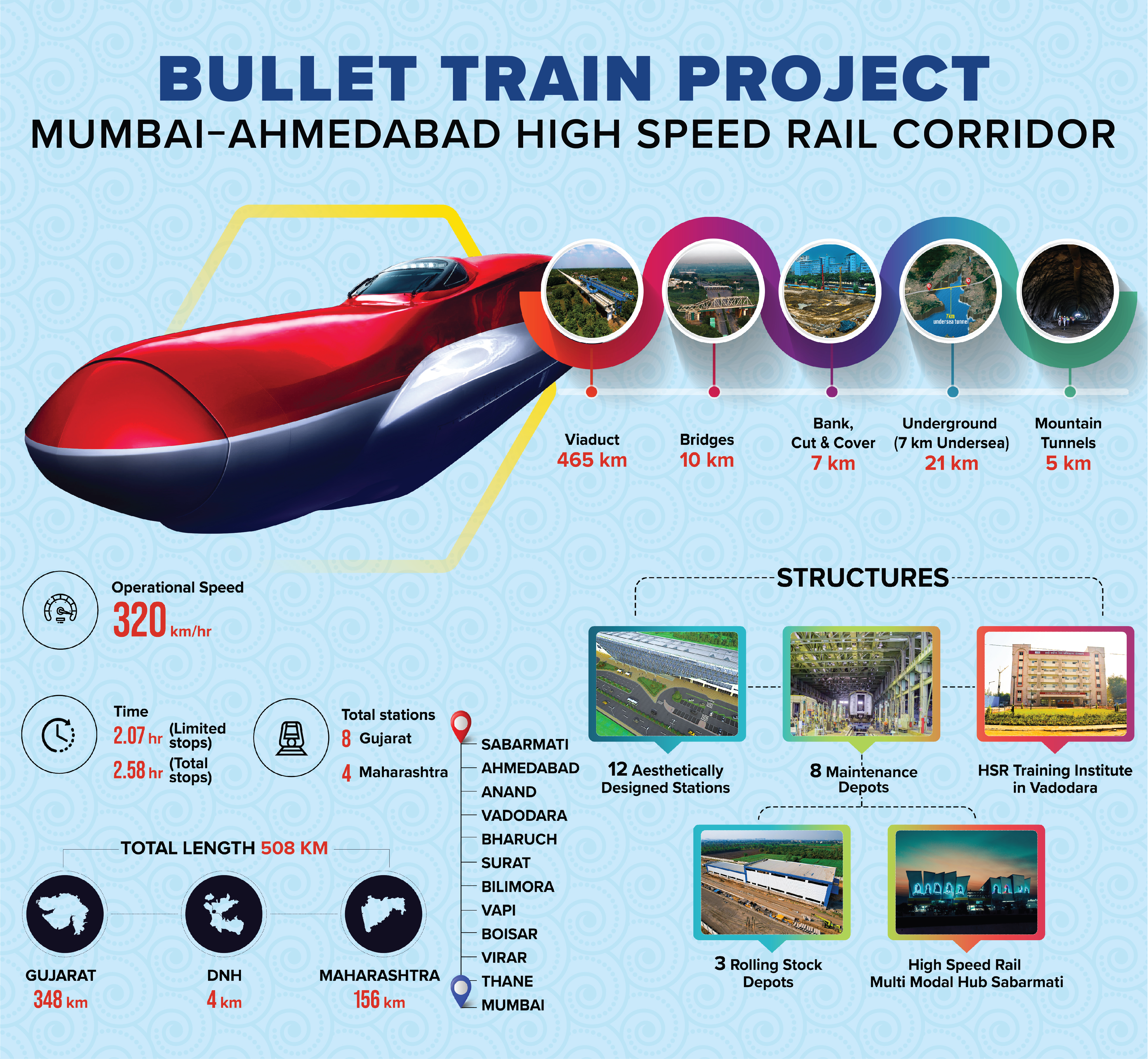National High-Speed Rail Corporation Limited (NHSRCL) was incorporated on 12th February 2016 under the Companies Act, 2013 with an object to finance, construct, maintain and manage the High Speed Rail Corridor in India. The Company has been modelled as ‘Special Purpose Vehicle’ in the joint sector with equity participation by Central Government through Ministry of Railways and two State Governments viz. Government of Gujarat and Government of Maharashtra.
The High-Speed Rail (HSR) project apart from being a technological marvel, would afford many quantifiable benefits like saving in travel time, vehicle operation cost, reduction in pollution, job creation, reduction in accidents/ enhanced safety, imported fuel substitution, and reduction in pollutants. The project would also boost the infrastructure and add to the growth of economy.
The company would require a manpower strength of about 3000 - 4000 officials (estimated) for executing the operations of high-speed corridor. The requisite manpower would need to be highly proficient in implementation of high-speed technology so as to execute the project efficiently and effectively. Therefore, the company has started construction of an exclusive training institute at Vadodara to cater to this aspect.
The company would be ushering India into the category of few countries of the world (about 15) using High Speed Railway System.



